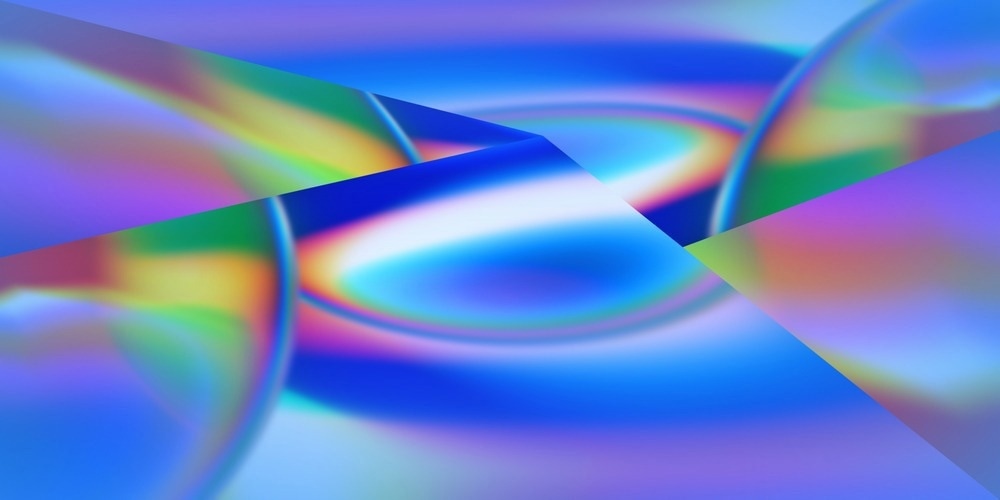For the analysis of trace gases, a non-contact quartz-enhanced photoacoustic spectroscopy (NC-QEPAS) method has been demonstrated. The NC-QEPAS seeks to address the limitations of the quartz tuning fork (QTF), which is constrained in its application for sensing corrosive and dusty gas.

Image Credit: Sergey Panychev/Shutterstock.com
A trace gas detection method called photoacoustic spectroscopy (PAS) has been widely applied in many different fields. Because the detection sensitivity of PAS does not depend on the absorption length, it has an advantage over other spectroscopic techniques. High sensitivities can be attained by PAS while sensing within a small gas volume.
Photoacoustic Spectroscopy
The foundation of acoustic waves serves as the operational technique of photoacoustic spectroscopy. A sample is placed in a special cell for analysis and exposed to modulated lasers. The gas molecules are stimulated by the laser, exciting them from their ground state. Through non-radiative relaxation, the excited molecules generate heat when relaxing back to the ground state. Acoustic waves are created as a result of the heat that affects the surrounding temperature and pressure.
The heat that is released and transferred to the cell's gas medium causes the pressure inside the acoustic cell to change on a periodic basis. The acoustic waves are captured by a very sensitive acoustic detector.
Photoacoustic gas sensors have been widely developed for monitoring the atmosphere, breath analysis, natural gas analysis in the petroleum industry, and for early fire warning.
Quartz-Enhanced Photoacoustic Spectroscopy
A quartz-enhanced photoacoustic spectroscopy (QEPAS) based on PAS was developed around the turn of the century. In contrast to PAS, QEPAS employed a quartz tuning fork (QTF) as the transducer to replace the microphone to exploit the piezoelectric effect to transform the acoustic signal into an electrical signal. The QTF exhibits a high Q factor and resonance frequency capable of superior detection sensitivity.
With QEPAS, a gas sample of just a few cubic centimeters is sufficient for a high-sensitivity analysis. For the detection of greenhouse gases like carbon dioxide, nitrous oxide, and methane, QEPAS has been effective.
QEPAS sensors thus far have been built around the QTF being submerged in the target gas molecules. The major limitation with these sensors is that they cannot be utilised to detect corrosive gases since doing so will cause the metal film electrodes on the QTF surface to corrode. Another issue is that the QEPAS sensor does not adequately detect dusty gases because microparticles adhering to the QTF will dramatically alter its vibration.
All QEPAS sensors that have been reported up to this point have been built with the QTF submerged in the target gas molecules. As the metal film electrodes on the QTF surface may corrode, these sensors have an unsolvable issue that prevents them from being used for corrosive gas detection. Another issue is that the QEPAS sensor is not effective for the detection of dusty gases since the vibration of the QTF will be severely impacted by microparticles adhered to the QTF.
Light-induced thermoelastic spectroscopy (LITES), which uses a sealed absorption cell to contain the gases, was presented as a solution to this issue. As a photon detector, the QTF was positioned after the absorption cell. The detection sensitivity of the LITES, a type of tunable diode laser absorption spectroscopy (TDLAS), depends on the length of the absorption. When compared to QEPAS, LITES compromised the benefits of a small sample gas volume and a compact sensor configuration.
Non-Contact Quartz-Enhanced Photoacoustic Spectroscopy
A new development has demonstrated how to analyze trace gases using non-contact or quartz-enhanced photoacoustic spectroscopy (NC-QEPAS). The QTF is not submerged in the gas like the QEPAS sensor that was previously described. A closed photoacoustic gas cell is created by synthesizing a thin, elastic parylene film and patching it to a QEPAS acoustic resonator. The QTF was used to couple with the parylene film and interface the gas cell from the outside. In order to obtain a resonance enhancement with the QTF, the film and the geometry of the resonator was extensively studied.
The parylene film exhibits a resonance enhancement with the QTF and acoustic micro-resonator due to an improved coupling effect, enabling non-contact photoacoustic gas detection. The NC-QEPAS reduces background noise while also amplifying the photoacoustic signal. The NC-QEPAS exhibits a signal-to-noise increase by a factor of 13 when compared to conventional contact QEPAS with QTF immersed in the gas. The NC-QEPAS sensor's Allan deviation indicates high long-term stability while an absorption coefficient.
Of 8.8 × 10−9 cm−1 W Hz−1/2 was achieved as a normalized noise equivalent. The designed QEPAS sensor exhibits a detection limit of 0.4 ppm with an integration time of 1000 s. Longer integration times can further enhance the detection limit.
Outlook
For the detection of corrosive and dusty gases, where current QEPAS have limitations, the NC-QEPAS has exhibited significant improvements. Further improvements to the resonator and elastic film may make it possible to achieve full non-contact detection by achieving a strong air coupling with QTF.
More from AZoOptics: What Are Semiconductor Lithography Systems Used For?
References and Further Reading
Haoyang Lin, Chenglong Wang, Leqing Lin, Minshuai Wang, Wenguo Zhu, Yongchun Zhong, Jianhui Yu, Frank Tittel, and Huadan Zheng , "Non-contact quartz-enhanced photoacoustic spectroscopy", Appl. Phys. Lett. 122, 111101 (2023) https://doi.org/10.1063/5.0134744
Angelo Sampaolo, Pietro Patimisco, Marilena Giglio, Andrea Zifarelli, Hongpeng Wu, Lei Dong, Vincenzo Spagnolo,
Quartz-enhanced photoacoustic spectroscopy for multi-gas detection: A review, Analytica Chimica Acta, Volume 1202, 2022, 338894, ISSN 0003-2670,
https://doi.org/10.1016/j.aca.2021.338894.
Sivarajah, I. (14 February 2023) What is Photothermal Spectroscopy?
[Online] AZoOptics.com. Available at: https://www.azooptics.com/Article.aspx?ArticleID=2395
Sivarajah, I. (22 September 2022) Enhancing Photo-Acoustic Spectroscopy with an Additively Manufactured Detection Module?
[Online] AZoOptics.com. Available at: https://www.azooptics.com/News.aspx?newsID=2795
Disclaimer: The views expressed here are those of the author expressed in their private capacity and do not necessarily represent the views of AZoM.com Limited T/A AZoNetwork the owner and operator of this website. This disclaimer forms part of the Terms and conditions of use of this website.